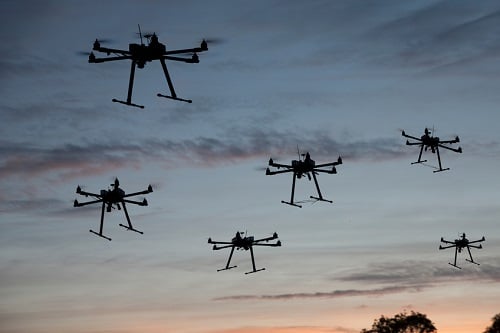Owning a drone is the modern-day equivalent of having the best wooden glider 60-years-ago, or the zippiest remote-control helicopter in the 1990s … but drones are not just toys.
Nowadays drones are being used for commercial and recreational purposes. In the business world, they are being used by contractors to survey land and by scientists for research. Photographers and videographers are using drones to capture wide shots and epic, birds’ eye-view landscapes.
Drones are also starting to come in handy in the insurance industry. Unmanned aerial vehicles (UAVs) can be extremely beneficial in the property & casualty insurance sector, especially in the claims adjusting space. US-based Farmers Insurance recently hit the headlines for launching a nationwide drone program, targeting areas impacted by hailstorms and severe weather events.
Search and compare insurance product listings for Drones from specialty market providers here
UAV technology could also be used to assist with underwriting in the future, according to Tia Becker, CIP, manager, personal insurance, Burns & Wilcox.
“It does make sense to use drone technology in the insurance industry,” said Becker. “When you have to survey a property or an area of land that is not accessible, it makes absolute sense to have these drones go in and film the situation for you.
“People use drones in business for all sorts of reasons. For example, real estate agents are using drones to film and survey areas to help sell properties. It makes sense to have a drone that you can fly in to get an aerial view and collect data that might otherwise be difficult to obtain.”
Drone technology has its own unique exposures, which will also vary between recreational and commercial use. The three key areas brokers and insurers need to be aware of for customers are: bodily injury, property damage and privacy, according to Becker.
“If a client is using a drone with a camera attached to it, privacy can be an issue,” commented Becker. “It depends on the area the client is capturing on film and who is within that vicinity. You could unintentionally breach someone’s privacy and see something that you don’t want to see when flying your drone with a camera.
“There are also issues from a physical standpoint. The drone could easily cause bodily injury or property damage if the machine malfunctions or the operator accidentally loses control.”
Communicating those risks and staying on top of legal and regulatory requirements is absolutely vital for the insurance broker, said Becker. It requires a conversation with the client to determine how the drone is being used and the exact weight and size of the kit.
Transport Canada has particular rules and regulations regarding drone-usage based around things like drone weight, the age of the operator, altitude, proximity to an airport and many more. It also requires adequate liability insurance and wants to make it law that anyone who flies a drone that weighs more than 250g has at least $100,000 of liability insurance coverage.
The UAV market is “definitely increasing” and the insurance sector will grow to meet it. Interest in drones will only continue to grow as society becomes more “tech savvy,” added Becker.
Related stories:
Ottawa pushes for more drone regulations
Allianz offers major drone backing


